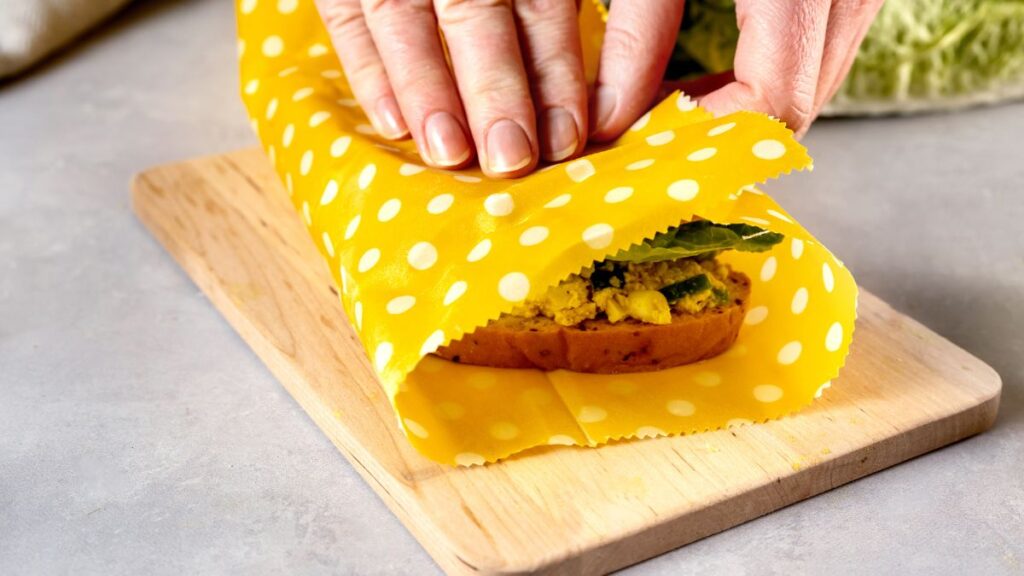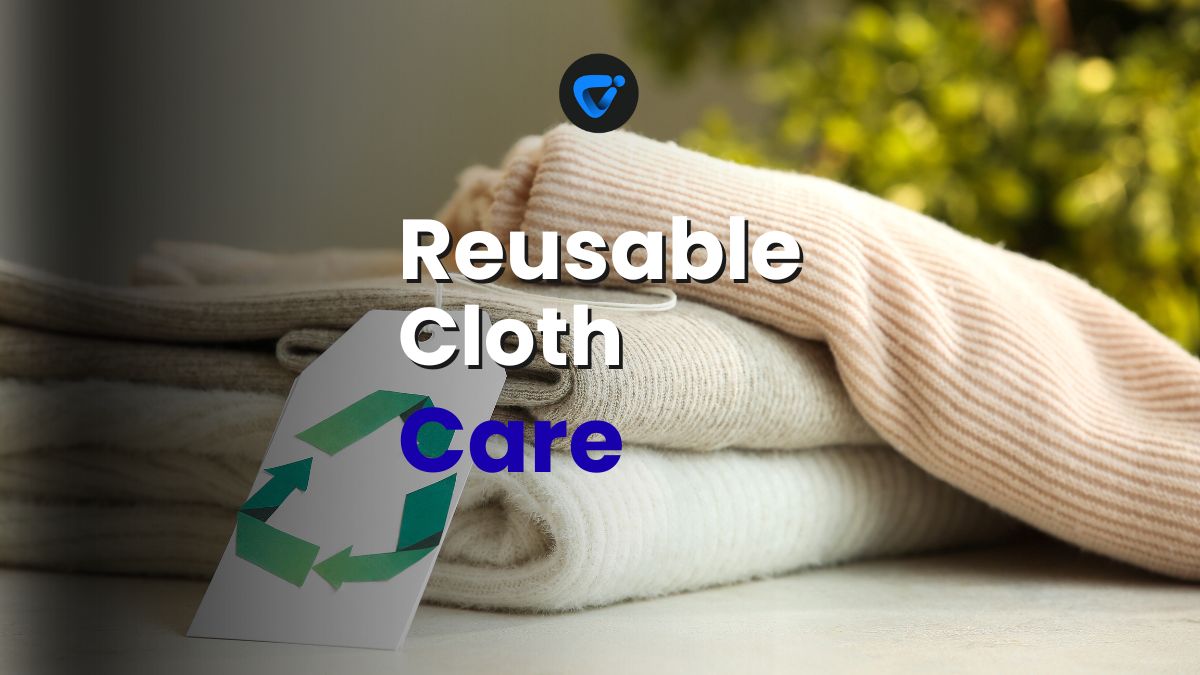
In an age where every small sustainable choice makes a difference, beeswax wraps have become one of the most practical and charming solutions for eco-conscious kitchens. These reusable sheets—made from cotton fabric coated with beeswax, natural resin, and oils—are not just an alternative to plastic; they’re part of a mindset that values renewal over waste.

DIY Drain Deodorizer with Everyday Pantry Items
Freshen your sink fast! Make a DIY drain deodorizer with simple pantry items for a clean, odor-free kitchen.
Beeswax wraps bridge the gap between functionality and environmental care. They help reduce single-use plastic, keep food fresher for longer, and even serve as clever cleaning tools around the home. Once you start using them daily, you realize that sustainability doesn’t have to be complicated—it just needs consistency.
Making Beeswax Wraps Part of Daily Kitchen Routines
Bringing beeswax wraps into your daily kitchen rhythm is easier than it seems. The secret is to keep them visible, accessible, and ready to use. Place a small basket of wraps near your cutting board or lunch containers—seeing them reminds you to reach for one instead of plastic.
| Purpose | Plastic Wrap | Beeswax Wraps | Next Action |
|---|---|---|---|
| Half Avocado Storage | Dries quickly, wasteful | Seals and keeps moist | Wrap directly, save space |
| Bowl Covering | Hard to seal, single-use | Reusable, form-fitting | Press around rim, reuse |
| Sandwich Wrapping | Crumples, hard to reuse | Easy to clean and reuse | Fold, rinse, repeat |
| Cheese Storage | Sticky residue | Breathable, keeps fresh | Wrap, store in fridge |
| Snack Packs | Needs a new bag each day | Foldable, lasting | Pocket, purse, or lunchbox |
Using beeswax wraps daily changes how you think about storage and waste. Each use replaces a piece of plastic that might otherwise end up in landfills. Over time, that small switch becomes a habit of care—for your food, your home, and the planet.
Sealing Foods for Freshness
One of the biggest advantages of beeswax wraps is how effectively they preserve freshness. The wraps mold perfectly to food or container surfaces, creating a natural, breathable seal. This prevents moisture loss while allowing food to breathe—something airtight plastic can’t do.
Perfect applications include:
- Covering bowls or plates of leftovers
- Wrapping sandwiches and snacks for lunches
- Preserving sliced fruits and vegetables
- Protecting herbs, greens, or cheese in the fridge
- Storing bread and baked goods to prevent dryness
When using a beeswax wrap, the warmth of your hands activates the wax, softening it slightly so it adheres to surfaces. Once it cools, it stiffens again, forming a natural seal. This combination of flexibility and grip makes it one of the simplest, most effective kitchen tools.
🌿 Pro Tip: If you’re wrapping cut fruit like apples or avocados, press the wrap snugly to minimize air contact. The result? Longer freshness and fewer spoiled items.
Packing a Lunch with Intention
Packing your lunch can be a mindful act instead of a rushed task. Beeswax wraps bring a touch of ritual and creativity to your daily meals. They’re easy to fold, seal, and reuse—and their natural patterns make every lunch feel special.
Creative ways to use beeswax wraps for lunches:
- Wrap sandwiches tightly to prevent drying
- Fold snack pockets for nuts or sliced veggies
- Line reusable containers for easy cleanup
- Use as a natural placemat during outdoor lunches
- Fold into envelopes for granola bars or fruit slices
Unlike plastic bags, wraps can be rinsed and used again the next day. Over weeks, you’ll notice how your waste bin shrinks and your food looks fresher.
Beeswax wraps are perfect for anyone who packs food daily—students, commuters, and families alike. They make the process of eating well and living sustainably more intentional, colorful, and satisfying.
Cleaning and Caring for Beeswax Wraps: Keep Them Safe and Hygienic
Good care means longer life. With the right habits, beeswax wraps can last up to a year or more. Their maintenance is simple but specific—no hot water, no harsh scrubbing, and no heat exposure.
Rinsing After Everyday Use
After each use:
- Rinse with cool water immediately after removing food.
- Use mild dish soap only when needed (for greasy residues).
- Pat dry with a towel and let air-dry completely before folding.
- Avoid twisting or wringing, which may crack the wax surface.
- Store flat or roll loosely to prevent permanent creases.
Important: Never expose beeswax wraps to high heat—no microwaves, ovens, or boiling water. Heat melts the wax and ruins the seal.
Dealing With Stubborn Residue
Even with good care, sticky or greasy spots may appear. Handle them gently:
- Soak briefly in cool water for a minute.
- Use the soft side of a sponge with mild soap.
- Blot with a clean towel instead of rubbing.
- If needed, refresh with a thin layer of melted beeswax.
- Rotate wraps often so wear distributes evenly.
Over time, your wraps develop character—creases, a matte finish, and softer edges—but remain fully functional. The goal isn’t to keep them pristine; it’s to keep them useful.
Using Beeswax Wraps as Creative Cleaning Tools Around the Home
Once beeswax wraps lose some of their stickiness, don’t discard them. They’re still valuable! Repurpose them as gentle, reusable cleaning aids.
Wiping and Dusting Small Surfaces
Beeswax wraps are soft yet slightly tacky—perfect for collecting dust and crumbs.
Use them for:
- Cleaning window ledges and baseboards
- Dusting shelves, decor, and picture frames
- Wiping wooden furniture or utensil handles
- Lining drawers to keep them dust-free
Brightening Faucets and Handles
Rub old wraps on metal or chrome surfaces like faucets, handles, and doorknobs. The wax leaves a thin protective layer that resists fingerprints and water stains.
🧽 Bonus: You can also polish stainless-steel appliances lightly with old wraps for a natural shine.
Gentle Surface Cleaning
Fold wraps into small pads to wipe crumbs or light spills off countertops. Their flexibility makes them ideal for cleaning small appliances and kitchen corners.
Refreshing and Repairing Worn Out Wraps for Extended Use
Even the most durable beeswax wraps eventually lose their grip. Thankfully, you can refresh them easily at home using heat or a light wax coat.
Oven Refresh Method
- Line a baking tray with parchment paper.
- Lay your wrap flat on top.
- Set the oven to low heat (around 80°C / 175°F).
- Heat for 2–3 minutes—just until wax looks glossy.
- Remove carefully and let cool flat.
This redistributes the wax evenly and restores smoothness.
Point-Repair for Small Cracks or Flakes
- Sprinkle grated beeswax or use a pre-made wax bar.
- Place parchment paper on top.
- Iron on low heat for 10–15 seconds.
- Cool before use.
Doing this every few months keeps wraps flexible and sticky. It’s an easy, inexpensive maintenance routine that extends their lifespan dramatically.
Organizing the Pantry and Fridge with Beeswax Wraps
Beeswax wraps bring organization and charm to food storage. Their colors and patterns brighten your shelves while reducing visual clutter. Plus, they allow air circulation—keeping produce fresh without trapping moisture.
Batch Prep Storage Techniques
- Group foods by category: fruit, cheese, bread, greens.
- Wrap ingredients from weekly meal prep individually.
- Label each wrap with a removable tag or tape for easy tracking.
- Store vertically in baskets or containers for quick access.
Freezer Storage and Quick Labeling
While not suitable for long-term freezing, beeswax wraps handle short-term freezer use well—great for berries, herbs, or pre-chopped vegetables.
| Storage Type | Best Duration | Recommendation |
|---|---|---|
| Fresh herbs | 3–5 days | Wrap lightly, store upright |
| Bread or rolls | 4–6 days | Keep at room temp or fridge |
| Cheese | 1–2 weeks | Rewrap after each use |
| Fruit slices | 2–3 days | Store in crisper drawer |
| Frozen berries | Up to 1 month | Spread flat before freezing |
🧊 Tip: Label each wrap with masking tape and a date—helpful for batch cooking or family meal planning.
Beyond the Kitchen: Creative Household Uses
Beeswax wraps aren’t limited to food. Their versatility extends across your home in clever ways:
- Travel organization: Wrap jewelry, cords, or small toiletries.
- Gift wrapping: Fold around small gifts for a reusable eco-wrap.
- Plant care: Use as liners under potted plants to catch drips.
- Craft storage: Keep buttons, beads, or craft pieces tidy.
- Pet care: Wrap treats for walks or travel days.
Their soft, moldable texture adapts to countless situations, replacing disposable bags and tissues in creative ways.
When and Why to Replace Beeswax Wraps For the Best Results
Like any tool, beeswax wraps have a lifecycle. Over time, you’ll notice a gradual loss of stickiness or a worn, cracked surface. These signs indicate it’s time to retire or repurpose them.
Indicators for replacement:
- Wrap no longer sticks to surfaces
- Persistent odor or stains
- Wax flaking or fabric showing through
- Texture feels rough even after refreshing
Instead of throwing them away, cut old wraps into strips and:
- Compost them—they’re fully biodegradable
- Use as natural fire starters for fireplaces or barbecues
- Line planters or compost bins to reduce mess
Every replacement closes a sustainable loop—use, care, renew, and return to nature.
Building a Full Cycle Habit
Adopting beeswax wraps goes beyond food storage—it’s a gateway to broader sustainable habits. Once you see how simple it is to reduce plastic, you’ll naturally begin to rethink other routines.
Think in cycles:
- Use your wraps for daily storage.
- Rinse and dry after each use.
- Refresh monthly to maintain performance.
- Compost or repurpose when they reach the end of life.
Each cycle reinforces mindfulness—transforming sustainability from a concept into a lifestyle.
Over months, you’ll develop an intuitive rhythm: your kitchen becomes more organized, your waste decreases, and your shopping habits shift toward reusables.
Everyday Micro-Habits That Reinforce Success With Beeswax Wraps
Sustainability is built on repetition. Micro-habits are small, manageable actions that create long-term change. By weaving them into your day, beeswax wraps become a natural part of your flow.
Try these micro-habits:
- Keep wraps visible where you prep food.
- Wash after each use—even light ones—to prevent buildup.
- Assign wraps specific purposes (snack, sandwich, cheese).
- Make wrap cleaning part of your evening routine.
- Track your progress—how many plastic rolls you’ve avoided.
- Involve kids by making “wrap duty” part of chores.
Over time, these tiny habits add up. A single family using beeswax wraps regularly can save hundreds of plastic bags and wraps per year, significantly reducing landfill waste.
🎯 Mindset shift: Sustainability is not about sacrifice—it’s about substitution and care.
Bringing Beeswax Wraps Into Seasonal Routines
Your wraps can adapt to the seasons just like your kitchen habits do.
- Spring & Summer: Ideal for storing fresh herbs, fruits, and picnic snacks.
- Fall: Use wraps for baked goods, bread, and apple slices.
- Winter: Perfect for keeping cheese, leftovers, or meal prep organized.
You can even choose wraps in seasonal patterns or colors to make the experience more enjoyable and decorative—another subtle reminder to keep using them all year long.
Turning Routine Into Sustainability
Switching to beeswax wraps isn’t just about reducing waste—it’s about embracing a mindful way of living. Every wrap represents intention: a small decision to reuse, to care, and to slow down in a world of disposables.
With a bit of attention and creativity, these wraps can replace dozens of single-use items, simplify your kitchen, and spark a sense of calm satisfaction. They remind us that sustainability starts not with grand gestures, but with small, repeated choices—the kind made daily at home.
By learning to use, care for, and eventually compost your wraps, you’re joining a quiet movement of people reshaping their homes—and the planet—one fold at a time. 🌎💛
Frequently Asked Questions
Beeswax wraps are safe for most foods, including bread, cheese, fruits, and vegetables. However, avoid using them for raw meat or fish, as you can’t easily sterilize the wraps without melting the wax coating. Stick to dry or room-temperature items when unsure.
With regular use and gentle washing, beeswax wraps last about 6 to 12 months. You’ll notice decreased stickiness and visible wear when it’s time to refresh or retire them. Extend lifespan by rotating duties and refreshing the wax when needed.
Beeswax wraps can cover foods in the freezer for short stints. Keep storage under a month to avoid freezer burn or stiffening wax. Thaw before opening and dry wraps completely before returning to normal storage.
For mild wear, rejuvenate wraps with grated beeswax and gentle melting in a low oven. For major cracks, designate the wrap as a cleaning or organizing tool. Proper care usually prevents early damage.
When wraps can’t be refreshed, cut into strips and compost, or use for household projects like garden ties. Their natural materials break down over time, making them a zero-waste solution even at the end of their use.

Reusable Cleaning Cloths
Clean greener and smarter! Discover the best eco fabrics, care tips, and simple wins for reusable cleaning cloths.


